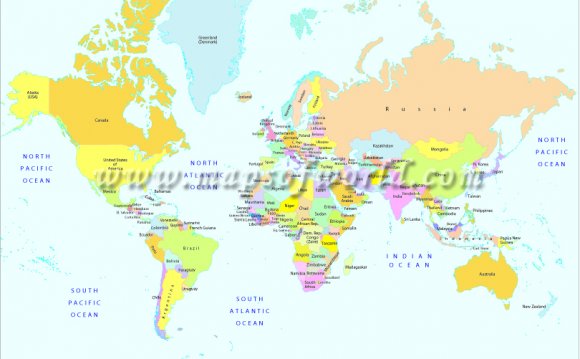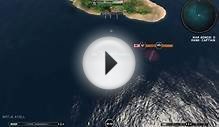
Water covers more than 70 percent of the Earth's surface and provides vital resources to all organisms on the planet. The largest bodies of water on Earth are the oceans, which consist of saline water, meaning salt water. Though all the oceans on Earth are connected, they have been divided into several sections geographically. The largest bodies of water on Earth are the Pacific Ocean, Atlantic Ocean, Indian Ocean, Southern Ocean, and Arctic Ocean.
The Pacific Ocean is the largest ocean on Earth, covering more than one-third of the Earth's surface and nearly half of Earth's water surface. The world's second largest ocean is the Atlantic Ocean, which covers one-fifth of the total surface area of the Earth. The third largest ocean in the world, the Indian Ocean, is surrounded by the Arabian Peninsula and Southeast Asia in the north, Africa in west and Australia in the east. The Southern Ocean has been defined relatively recently, in 2000, and consists of the waters around Antarctica. Located around the Arctic Circle, the Arctic Ocean is the smallest and the shallowest ocean in the world. South China Sea, one of the largest seas after the 5 largest oceans of the world, surrounds hundreds and hundreds of islands.
The largest oceans and sea map indicates the name and location of the ten most prominent water bodies on Earth.
ACOD~20120905
World Top 10 - Largest Oceans and sea
| S. NO. | Ocean | Area | Average depth | Maximum depth | Deepest point |
|---|---|---|---|---|---|
| Pacific Ocean | South China Sea | 895400 | 5419 | 16456 | West of Luzon |
| Caribbean Sea | 1049500 | 8685 | 22788 | Off Cayman Islands | |
| Mediterranean Sea | 1144800 | 4688 | 15197 | Off Cape Matapan, Greece | |
| Bering Sea | 884900 | 5075 | 15659 | Off Buldir Island | |
| Sea of Okhotsk | 613800 | 2749 | 12001 | 146°10'E; 46°50'N | |
| 10 | Gulf of Mexico | 615000 | 4874 | 12425 | Sigsbee Deep |
RELATED VIDEO












